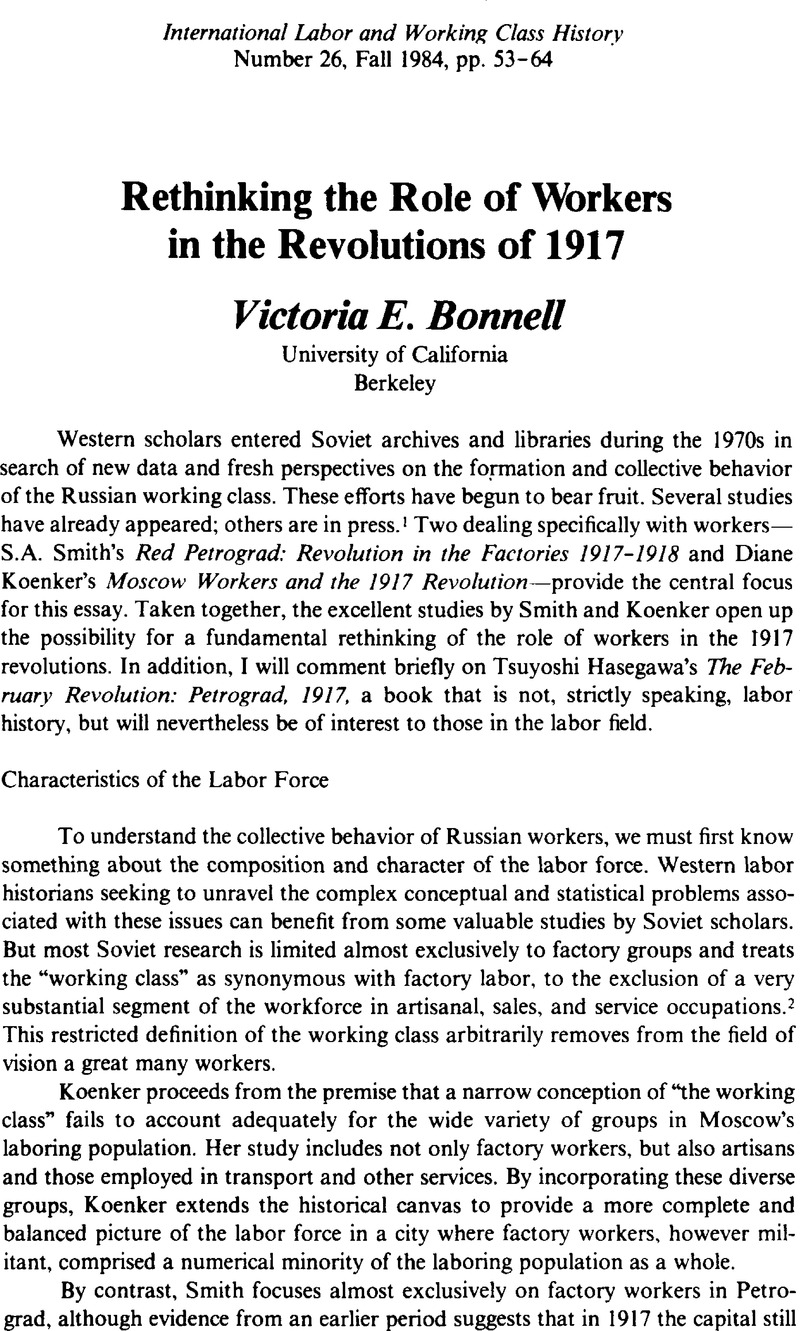No CrossRef data available.
Article contents
Rethinking the Role of Workers in the Revolutions of 1917
Published online by Cambridge University Press: 16 December 2008
Abstract

Information
- Type
- Review Essays
- Information
- Copyright
- Copyright © International Labor and Working-Class History, Inc. 1984
References
NOTES
1. The first of these recent studies on Russian labor was Johnson, Robert Eugene, Peasant and Proletarian: The Working Class of Moscow in the Late Nineteenth Century (New Brunswick, 1979)Google Scholar. This was followed by Koenker's study and by Engelstein, Laura, Moscow 1905: Working-Class Organization and Political Conflict (Stanford, 1982)Google Scholar; Bonnell, Victoria E., Roots of Rebellion: Workers' Politics and Organizations in St. Petersburg and Moscow, 1900–1914 (Berkeley, 1983)Google Scholar; Mandel, David, Petrograd Workers and the Old Regime: From the February Revolution to the July Days, 1917 (N.Y., 1983)CrossRefGoogle Scholar; and Glickman, Rose, Russian Factory Women: Workplace and Society 1880–1914 (Berkeley, 1984).Google Scholar A study of Petrograd workers by Robert Devlin is also forthcoming.
2. Very few Soviet studies include the workers whose artisanal trades were being transformed by the introduction of subcontracting. The notable exceptions include Semanov, S.N., Peterburgskie rabochie nakanune pervoi russkoi revoliutsii (Moscow and Leningrad, 1966)Google Scholar and Shuster, U.A., Peterburgskie rabochie v 1905–1907 gg. (Leningrad, 1976).Google Scholar The standard reference work by Rashin, A.G., Formirovanie rabochego klassa Rossii: Istoriko-ekonomicheskie ocherki (Moscow, 1958)Google Scholar, also includes non-factory groups.
3. Smith, , 190Google Scholar; Koenker, , 360; Hasegawa.Google Scholar
4. Smith, , 1.Google Scholar It should be noted that Smith's study extends to mid-1918, but the post-October period will not be considered in this essay.

